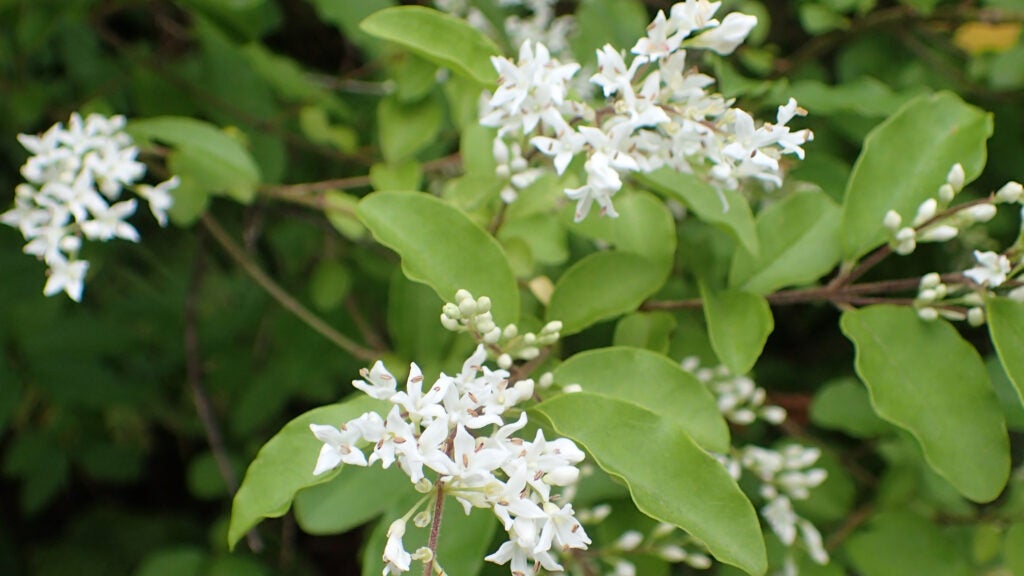Dealing with Privet Problems
Published 1:38 pm Wednesday, January 10, 2024
|
Getting your Trinity Audio player ready...
|
By Mary Helen Ferguson
Columnist
Chinese privet (Ligustrum sinense) is, unfortunately, a common plant in the southeastern US. It spreads by both seeds and root suckers and often crowds out native woodland plants.
In wooded areas, Chinese privet often grows near yaupon holly, which is one of our native shrubs. It’s easy to confuse the two plants from a distance. However, the leaves of yaupon holly are arranged alternately on the stem, while those of Chinese privet have opposite arrangement (i.e., pairs of leaves are situated directly across from each other). Fruits of yaupon holly are red, while those of Chinese privet are dull black.
You’re likely familiar with Japanese privet (Ligustrum japonicum), which is commonly grown as an evergreen hedge in the southeastern US. You may also have seen glossy privet (Ligustrum lucidum). Both of these have larger leaves than Chinese privet. Glossy privet grows taller than Japanese or Chinese privet and, like Chinese privet, often spreads by seed to an undesirable extent.
LSU AgCenter research found that an herbicide with the active ingredient metsulfuron methyl was effective when applied to the leaves of Chinese privet between June and September. Several 60 percent metsulfuron methyl products – including MSM Turf, MSM 60, Escort XP, and Romestol – are available for use on non-crop sites. (See labels for details about what other types of sites these herbicides can be used on.)
Another option is to cut Chinese privet stems near the base and apply a triclopyr-containing herbicide on the freshly made cuts to prevent the stumps from resprouting. For example, one quart of Garlon 4 Ultra can be mixed with 3 quarts of diesel and applied in this manner on non-crop or forested sites. A similar mixture using Remedy Ultra, which is labeled for pasture use, worked well when applied to cut stumps in January.
Anytime you use an herbicide or other pesticide, read the label to make sure it’s suitable for the situation in which you intend to use it, and follow label directions.
Not all Chinese privets are troublesome. A cultivar called ‘Sunshine’ has yellow to light green leaves and, importantly, is sterile. In other words, it doesn’t produce seeds. It’s been used along with purple-leafed loropetalum for a “purple and gold” effect on LSU’s campus. If ‘Sunshine’ is grown in the shade, the leaves are darker green and look more like those of wild-type privet.
Let me know if you have questions.
Dr. Mary Helen Ferguson is an Extension Agent with the LSU AgCenter, with horticulture responsibilities. Contact Mary Helen at mhferguson@agcenter.lsu.edu.





